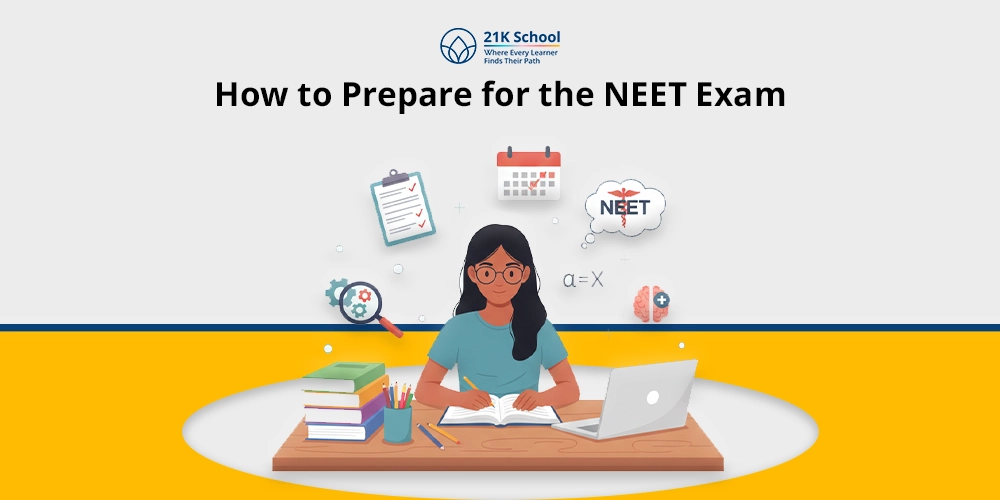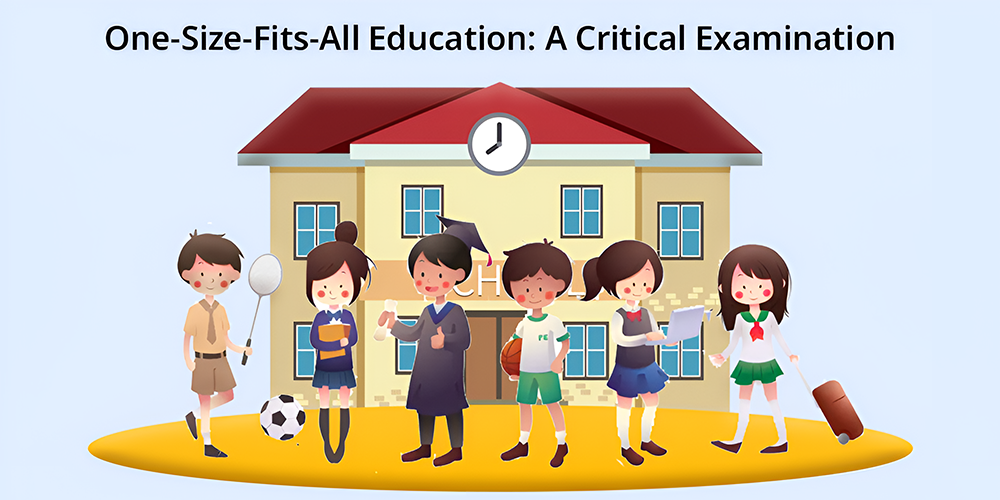
As we move forward in our life, we very well know that education is evolving and transitioning through time.
Education is very important for individual growth and societal projects and when we look at it from the point where the world needs validation from the education system we have to also take in concern that “ one size doesn’t fit all”
But there has been a largely and widely practiced concept of one size fits all where the approach has been standardised by all the major curriculum and has been integrated into the education framework for a very long time where under this approach there are uniform teaching methodology and fixed assessment criteria for students which create the situation where students are in a dictated learning environment.
This model of teaching has been widely adapted for its scale ability and the efficiency it holds but it also raises concerns about effectiveness in education when it comes to students with diverse needs.
Contents
Key Characteristics of One-Size-Fits-All Education

The four key characteristics of one-size-fits-all education are standardized curriculum, uniform teaching methods, fixed assessment criteria, and limited flexibility in learning pace.
1. Standardized Curriculum
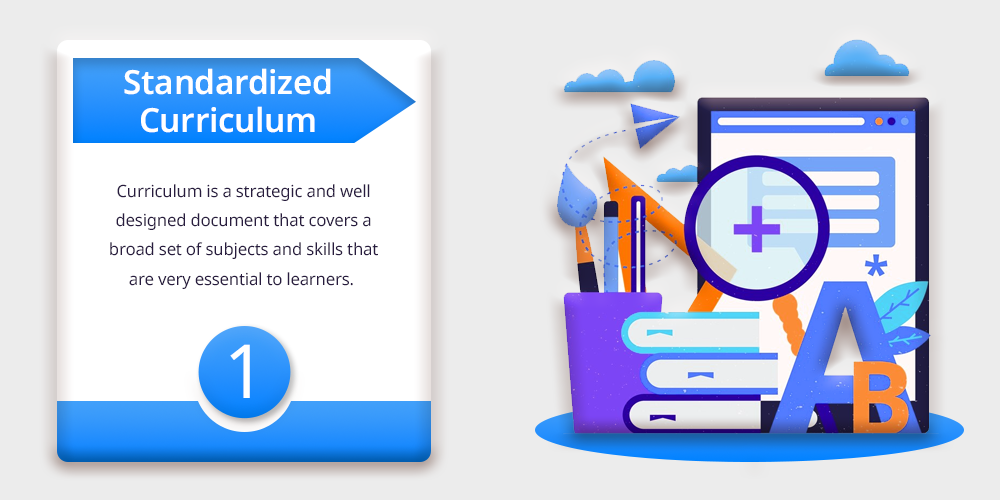
One of the most important and distinctive features of “one size fits all” education is the way they are a standardised curriculum.
Standardised is to maintain accuracy at all times, very similar to uniformity.
And the curriculum is a strategic and well designed document that covers a broad set of subjects and skills that are very essential to learners.
The most important part of this approach is to ensure that every student receives an equal access to quality and foundational education which is basic to every learner, the whole understanding revolves around the fact that this approach may fail to recognise that education needs to be personalised and tailored as per the needs of every learner for their learning preferences and their paces.
2. Uniform Teaching Methods

One size with all education provides a learning landscape with the teaching method which is uniform.
For a system that is largely uniform, It is very difficult to manage engagement rate and then the education tends to rely on lecture based instruction, textbook learning and rote memorization. With uniformity comes responsibility.
The approach undermines the situation where all students are believed to be learning at the same pace and in some way it leaves little or no room for students who may require differentiated instructions.
When things are not personalised which can help educators and institutions in catering to the diverse needs of learners who prefer differential learning styles such as, auditory, visual or kinesthetic learning.
There are various learning methods that parents have to choose from : Learning Methods What is it, Types and Learning Styles
3. Fixed Assessment Criteria
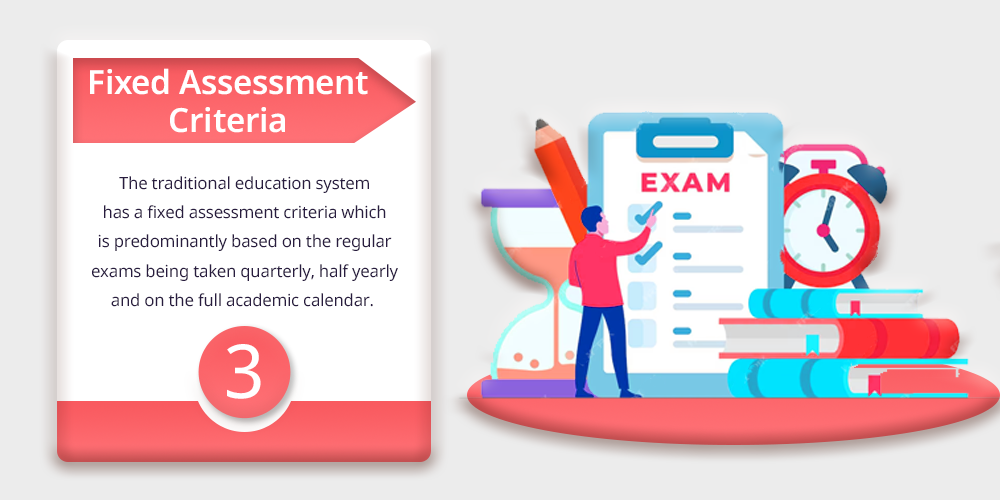
The traditional education system has a fixed assessment criteria which is predominantly based on the regular exams being taken quarterly, half yearly and on the full academic calendar.
These fixed criteria of examination and assessment basically emphasize more on memorization and regularisation of information which provides them with deeper understanding of the concept.
The whole understanding of assessment and criteria gives students an upper hand on their problems solving skills and creativity.
There are some students who do not work well under the rigid evaluation and they tend to excel in the existing traditional assessment criteria.
It is very easy and convenient for students to excel in a non-traditional way.
know the difference between traditional learning and hybrid learning .
4. Limited Flexibility in Learning Pace
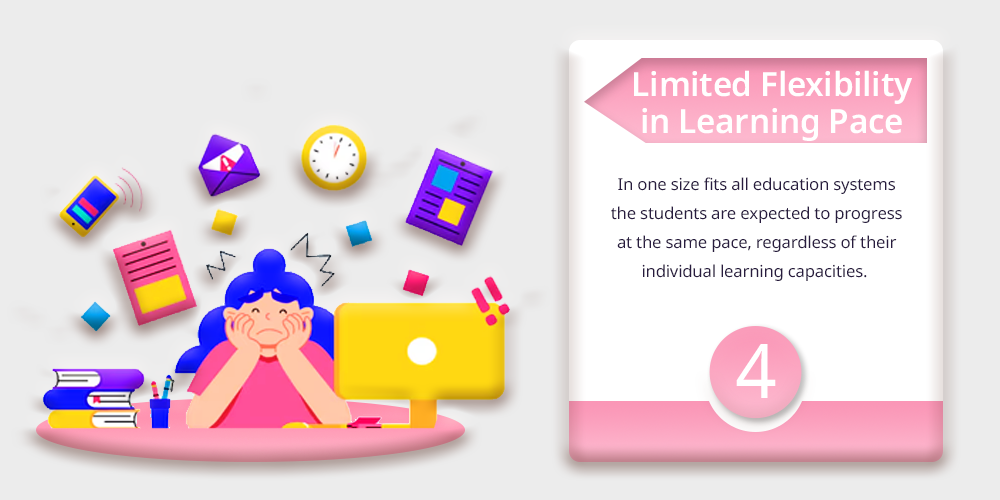
The world is very multidimensional and people no longer focus on being rigid.
And when it comes to the educational industry, flexibility drives the pace.
And In one size fits all education systems the students are expected to progress at the same pace, regardless of their individual learning capacities.
So, what does this mean?
This means that the advanced learners who are way ahead of their time may feel unchallenged, which will make them feel unbeatable while slower learners may struggle to keep up with their classmates, which will ultimately lead them to frustration, anxiety, and a potential loss of motivation — in both cases it causes mental distress.
Benefits of One-Size-Fits-All Education
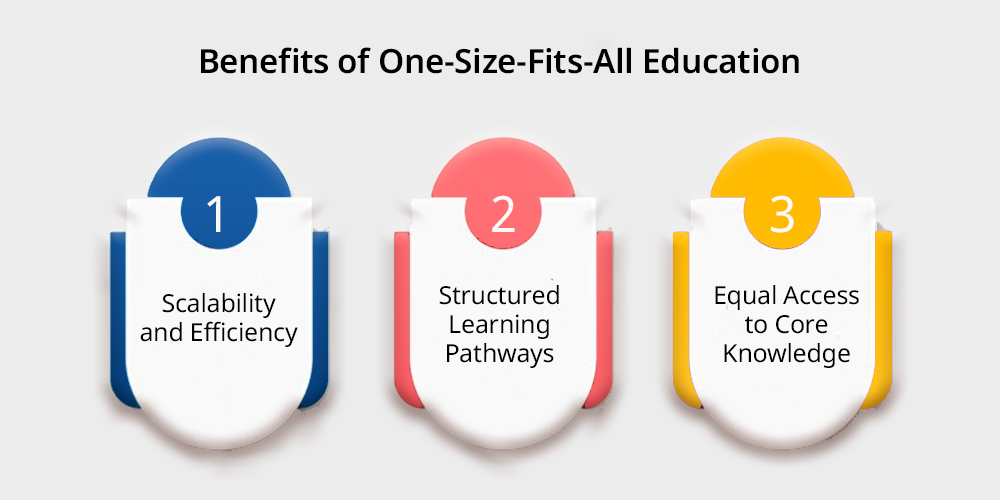
There are multiple benefits to the traditional teaching methodology and the same happens to the one-size-fits-all education approach.
And it might look like it has multiple limitations but when we look at it rationally, we have this method of technology existing for a very long time, there are certain advantages that contribute widely towards its adoption.
1. Scalability and Efficiency
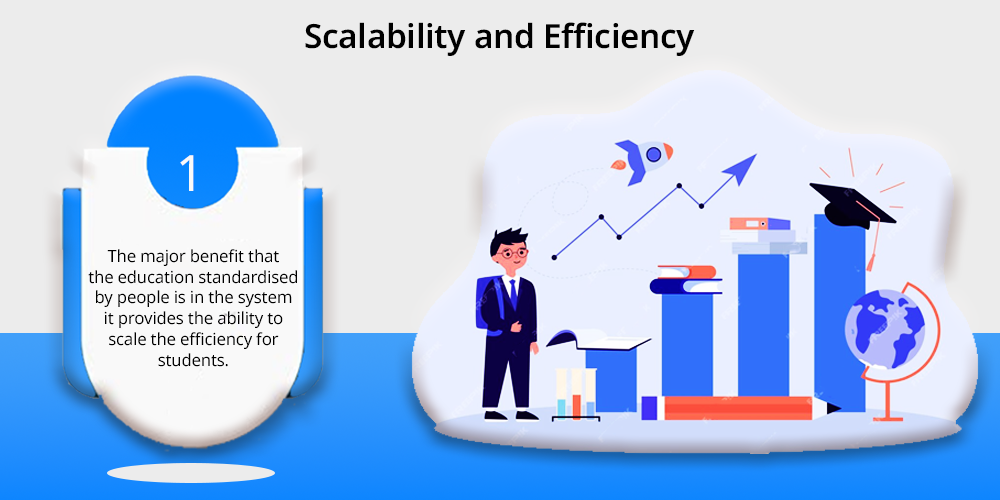
The major benefit that the education standardised by people is in the system it provides the ability to scale the efficiency for students.
When we come to terms with education scalability and efficiency, something that is being practiced and government and institutions are trying to be implemented under the national curriculum so that it impacts a nationwide audience of young learners.
Scalability does enough for students to understand that efficiency will make a huge difference in the world of education.
This whole advancement and implementation ensures that a large number of students receive an education which has the quality and with such level of scalability and efficiency there is no room required to customise the lesson plans for each individual.
2. Structured Learning Pathways
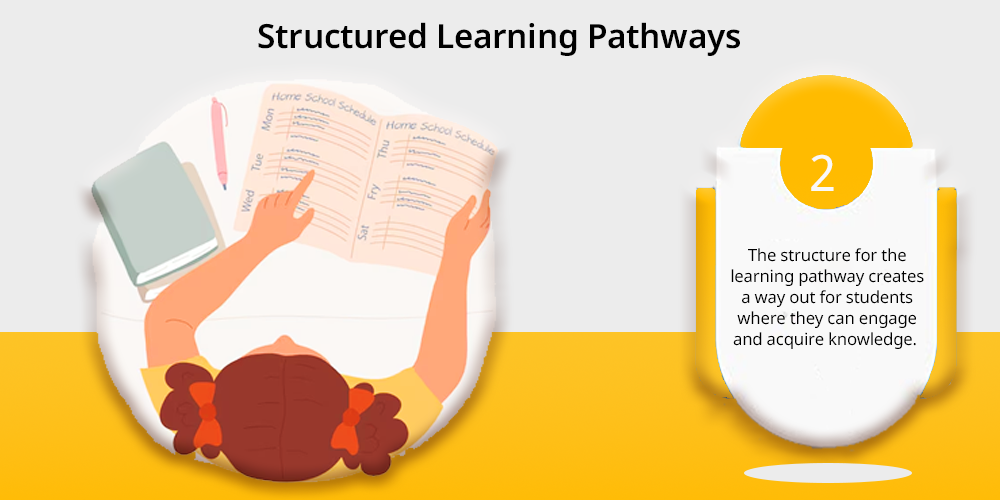
The standardized learning procedure provides the education system in a structured way and a clear learning pathway which allows students to follow the instructions and approach the knowledge building process step by step.
The structure for the learning pathway creates a way out for students where they can engage and acquire knowledge.
The structure ensures the students cover all the essential subjects and put forward all the fundamental concepts in place that are necessary for higher education and employment.
3. Equal Access to Core Knowledge
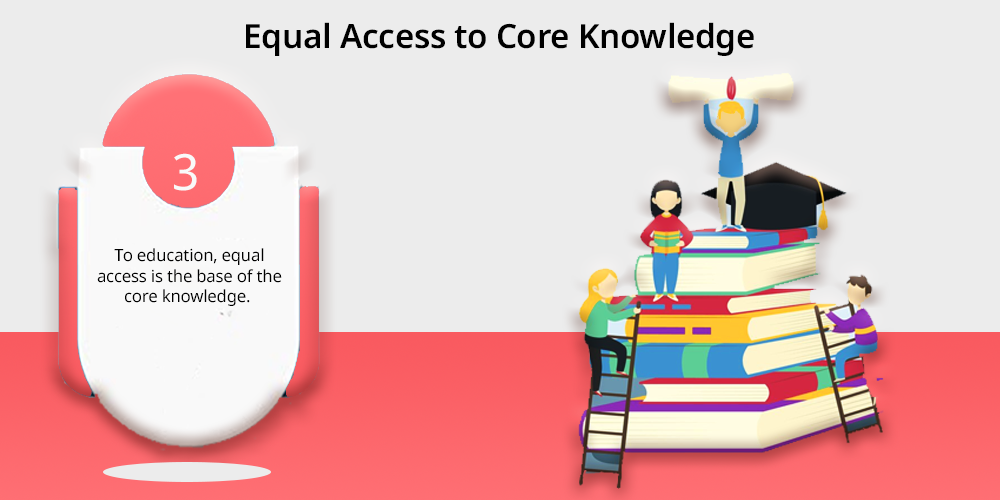
Equal access might look like a thing, which is difficult to handle.
To education, equal access is the base of the core knowledge.
And it can only be achieved by following a standardised curriculum, where every student has equal access to the same knowledge for every person around the globe. It aims to reduce disparities in education and not to ever compromise in the quality of education.
The approach where every learner gets all the right to learn and grow regardless of their background, has a chance to acquire essential skills and knowledge that prepare them for the future — basically making them a well-rounded individual.
Limitations and Challenges
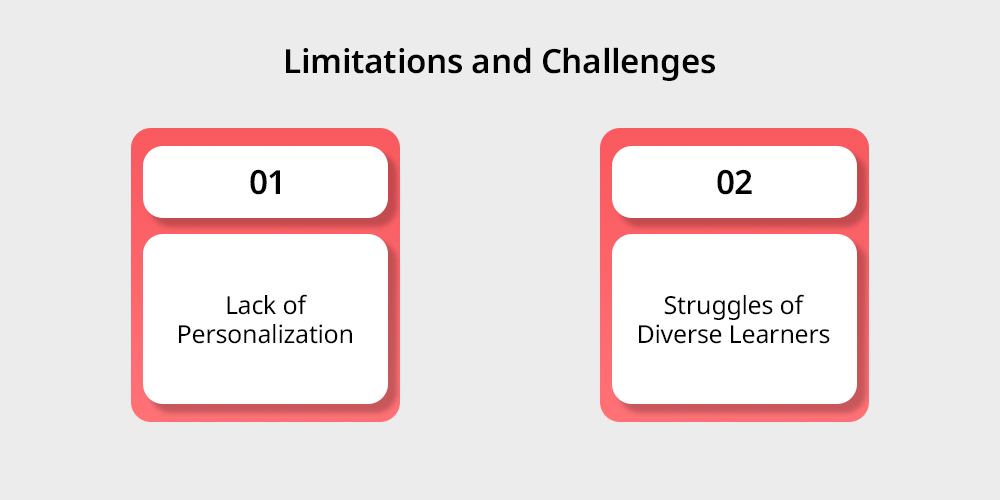
There are several limitations and challenges held up against the concept of one size fits all education which significantly impacts and hinders the effective learning experience for students and supports their personal growth.
1. Lack of Personalization
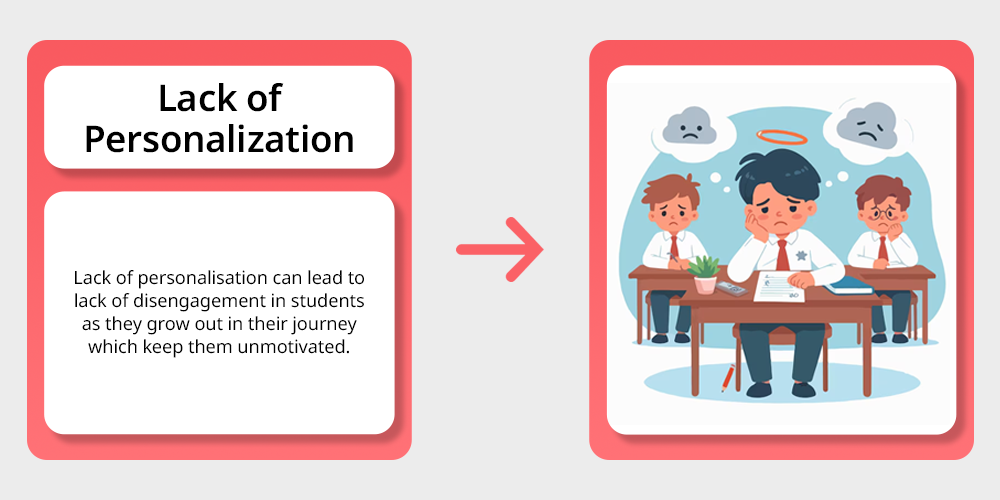
One of the major problems that revolves around the traditional education system where the concept of one size fits all is followed is Lack of Personalisation.
Being a standardised education system we randomly get misled in the journey where we neglect the significance of personalisation in education.
Personalisation is to meet the needs of every individual, based on their own personal needs, interests and strengths.
Lack of personalisation can lead to lack of disengagement in students as they grow out in their journey which keep them unmotivated especially for those who do not fit to the standard mould of society which is categorised as “normal”.
2. Struggles of Diverse Learners
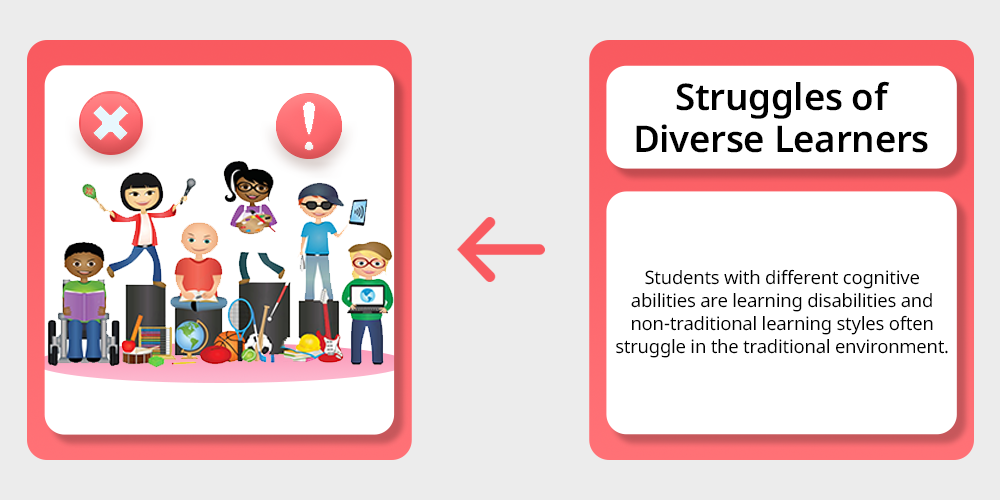
The struggle with diverse learners again starts with the fact that personalization is needed at some level for them.
Students with different cognitive abilities are learning disabilities and non-traditional learning styles often struggle in the traditional environment where we follow the system of one size fits all.
These things more problematically come to students with special needs and young athletes who are looking forward to pursuing education and balancing their co-curricular activities well.
To know more about Special Education at 21K School: Inclusive Learning for All read the blog.
In such situations those who require additional support for the educational journey when they are falling behind while on the other hand giving to students may feel unchallenged and will slowly lose their interest in the learning journey.
Teacher-Centric Approach vs. Student-Centered Learning
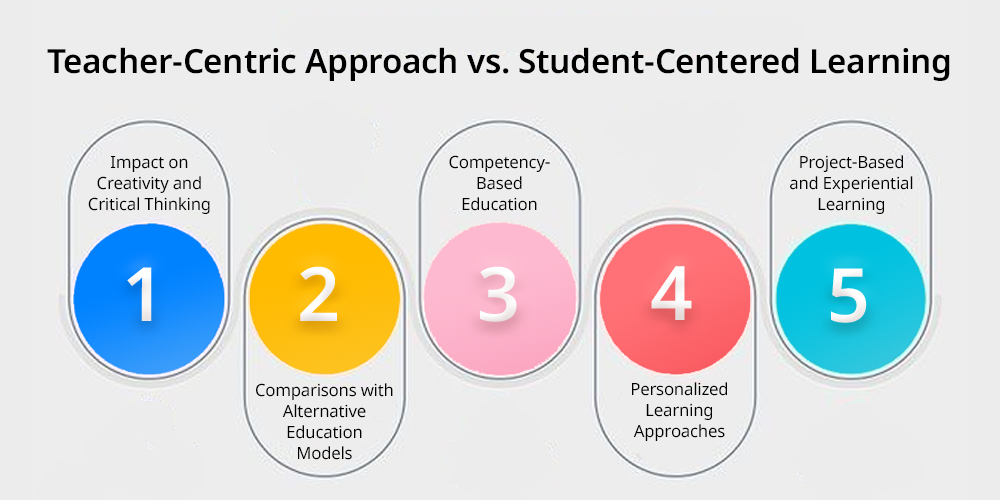
| Sr. No. | Differentiating Point | Teacher-Centric Approach | Student-Centered Learning |
| 1 | Role of Teacher | As an instructor and information presenter. | As a mentor, guide, and facilitator. |
| 2 | Role of Student | As a good memorizer and receiver. | As an active problem-solver and participant. |
| 3 | Focus | Primary source of knowledge is the teacher. | The student is at focus to be an active learner. |
| 4 | Type of Curriculum | A standardized and teacher-centered curriculum. | Student-preferred and customised curriculum. |
| 5 | Types of Skill Development | Recall and knowledge learning skills. | Student collaboration, critical thinking, and problem-solving skills. |
1. Impact on Creativity and Critical Thinking
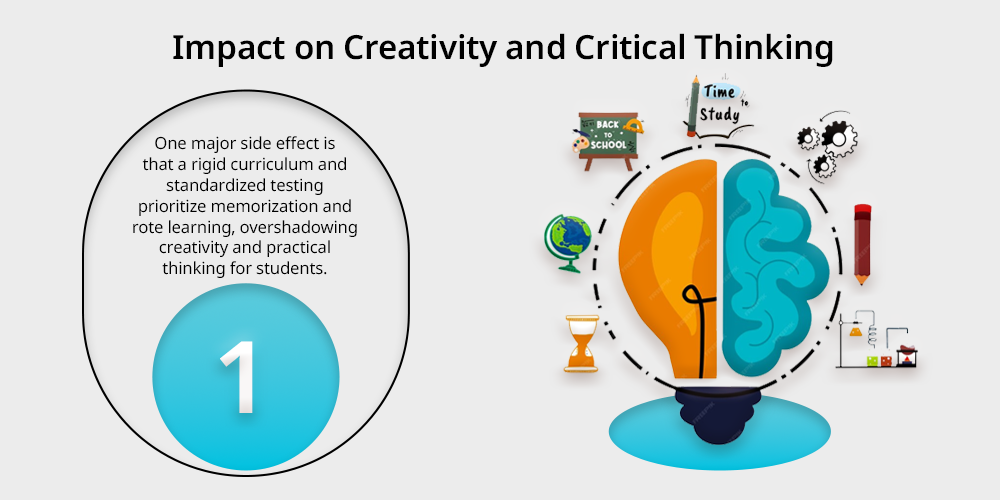
One side effect has a very great impact on creativity and practical thinking for students as being confined to a rigid curriculum and standardized testing emphasizes more on memorization and rote learning overshadows the power of creativity.
Students are really encouraged in a traditional setting to think outside the box or explore innovative ideas there in their daily life; they are limited to the rote learning where they are not exposed to real life experiences.
And it is important because that drives motivation for students.
Under such limited conditions students often do not get involved in real world problems which restrict their adaptation skills to changing job markets.
2. Comparisons with Alternative Education Models
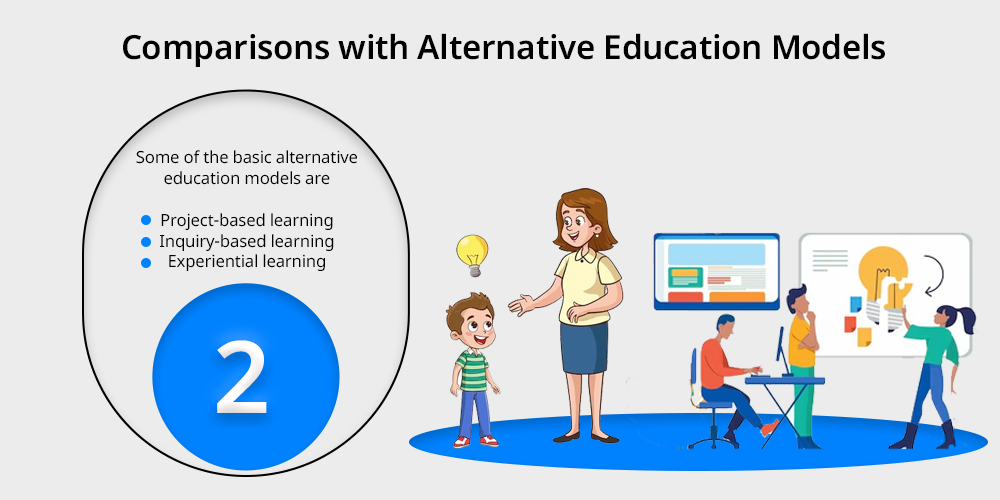
When we compare two aspects of education models, we have to know that it evolves and alternative education models have emerged as a solution to all the shortcomings that come with one size fits all model for learning.
Some of the basic alternative education models are :
3. Competency-Based Education
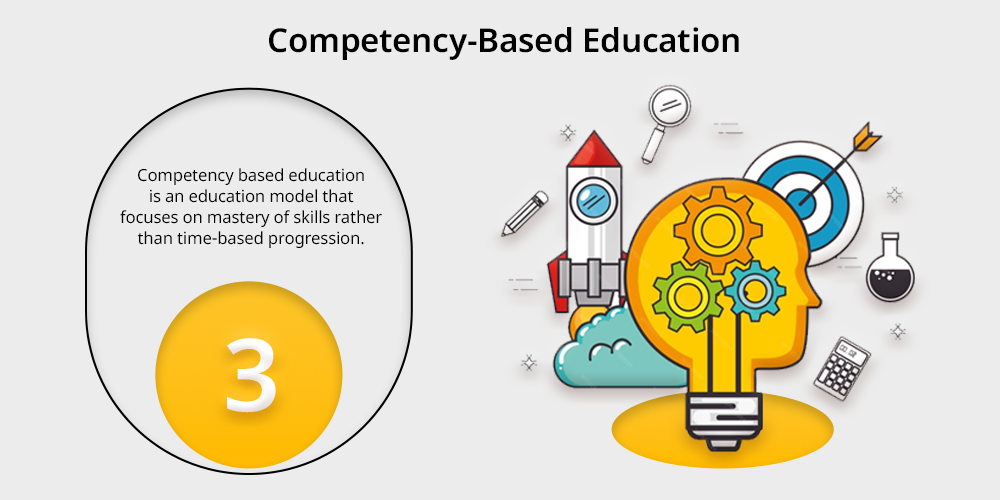
Competency based education is an education model that focuses on mastery of skills rather than time-based progression.
This model focuses on mastery of skills rather than time-based progression. Students advance once they demonstrate proficiency in a subject, ensuring a deeper understanding of concepts rather than just passing tests.
4. Personalized Learning Approaches
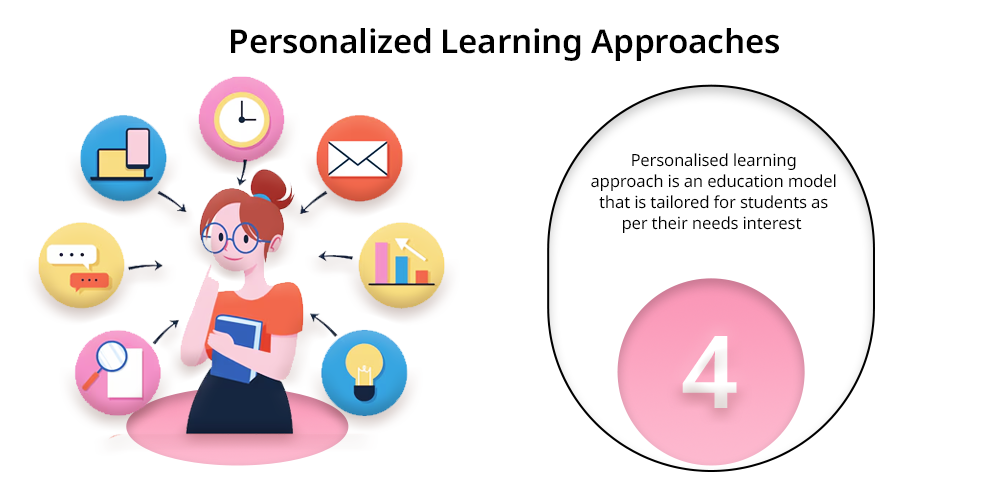
Personalised learning approach is an education model that is tailored for students as per their needs interest and paste where it may involve some of the adaptive learning technology being utilised in the classroom to customise curriculums and provide flexible assessment methods to students catering to all their needs.
And now we know, Why Schools Are Stressing on Personalised Learning .
5. Project-Based and Experiential Learning
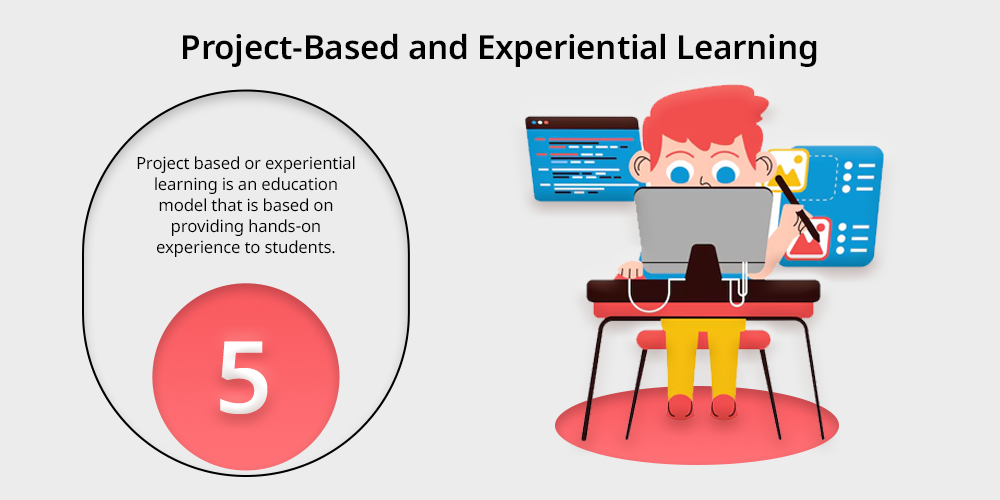
Project based or experiential learning is an education model that is based on providing hands-on experience to students.
Unlike the traditional teaching that focuses more on rote memorization, this model focuses on real world problem solving skills which allow students to engage with meaningful projects and have the benefit of real education.
With the help of this model it is much easier for students to work on their creativity, collaboration, problem solving skills along with their critical thinking skills.
Read this blog to know more about project based and experiential learning : 4 Benefits of Experiential Learning for Practical Knowledge .
Global Perspectives on One-Size-Fits-All Education
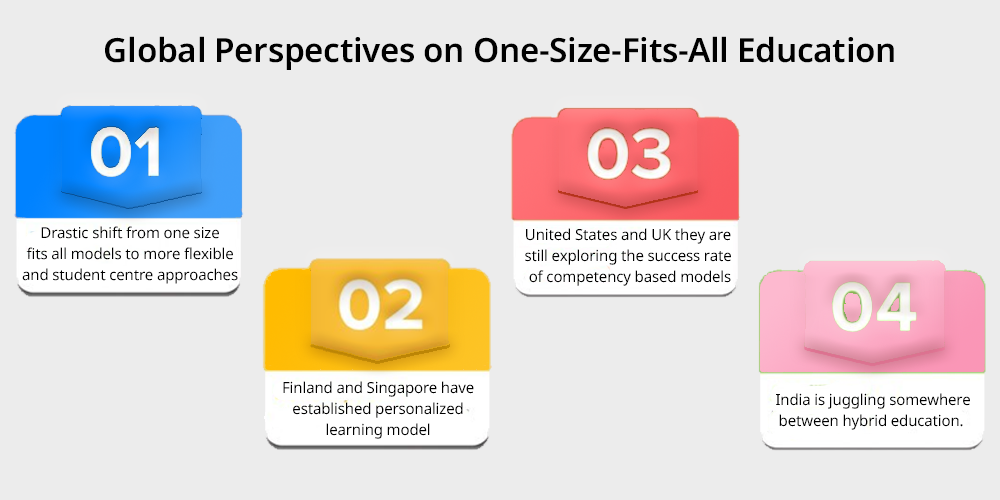
The education system is observing a drastic shift worldwide and as we are shifting from one size fits all models to more flexible and student centre approaches which will work in favour of the education industry in upcoming years.
Countries like Finland and Singapore have integrated a well established personalized and enquiry based learning model for themselves.
Whereas for countries like the United States and UK they are still exploring the success rate and implications of competency based models into their National curriculum to improve student engagement and outcomes.
And as far as the country India is concerned we are still transitioning between traditional education and online education and we are juggling somewhere between hybrid education.
Get a brief information about the Indian education system and the problem it currently has based on the comparison between traditional and modern teaching approaches: Indian education system problems .
With the help of platforms and institutions like 21K School online education has now been more accessible to people as it provides them with an opportunity to connect to a personalized learning experience which will help them in building a future for themselves ensuring holistic development .
Conclusion
One size fits all education models is something that has proven itself to be affected historically and has gained a lot of importance into the broader aspect of education.
With the world that is moving more towards personalization, which is the need of modern learners, we are looking forward to alternative educational models for students to ensure quality education as per their requirements.
The major advancement that allows us to shape the way for the future of education lies in personalization flexibility and providing students with a platform to gain hands-on experience with their learning.
All these advancements and alternates are taken into consideration to ensure that every student reaches their full potential and makes the best out of their educational journey.
It is very important for educators, policy makers and institutions to understand and reach ways to put solutions that can be implemented along with traditional approaches to give ways for innovation and creativity in the education sector to provide students with an inversive and engaging learning experience for them.
At last we can conclude by saying that we have to understand that education makes a foundation for students and it is very important to build a foundation based on the requirements coming from the student and the advancement that the world is looking forward to.


